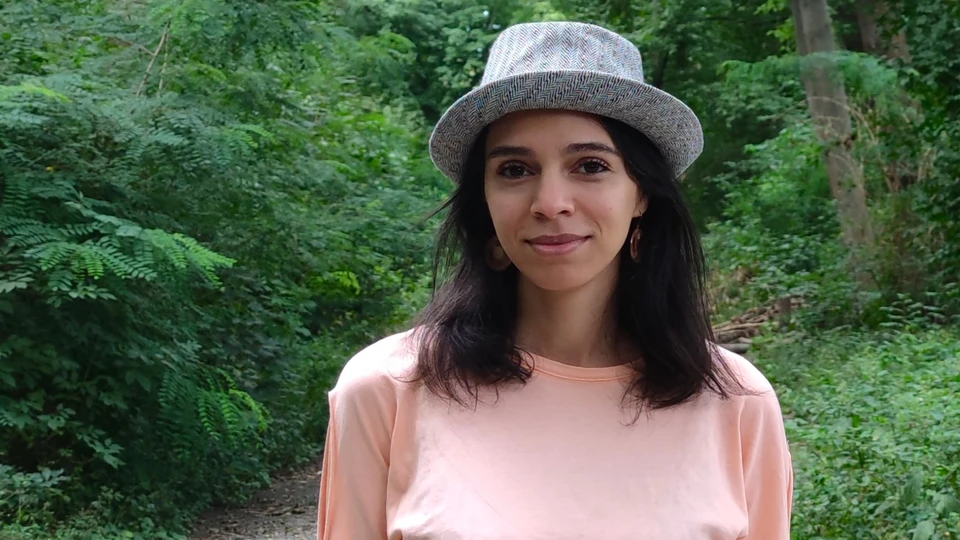NanoNarratives: Prof. Safa Shoaee, Group Leader - Heterostructure Semiconductor Physics Group
Prof. Safa Shoaee is an expert in the photophysics and optoelectronics of disordered semiconductors, focusing on the advancement of eco-friendly photonic and energy devices. She holds a joint position at PDI and the University of Potsdam, where she serves as an Associate Professor of Physics. At PDI, Safa leads the Heterostructure Semiconductor Physics research group, dedicated to the development and understanding of low-cost, large-area photovoltaic technologies.
What is the primary focus of your current research?
The primary focus of my research revolves around organic semiconductors, known for their vibrant colors, particularly for use in solar cell applications. I delve into fundamental research to establish the relationship between structure and function, aiming to transition from laboratory-scale solar cells to practical applications suitable for household use. The ultimate goal is to develop solar cells with a minimal carbon footprint, ensuring they are environmentally friendly and sustainable for widespread adoption.
What excites you the most about the potential impact of your work?
Many aspects of my work excite me, from my personal growth through learning to the immense satisfaction of igniting students' enthusiasm for science and providing them with valuable opportunities to explore and discover. The freedom to dive into research topics that intrigue me on my own terms is also incredibly empowering.
What initially sparked your interest in science, and more particularly in optoelectronics, and how has that motivation evolved over the years?
It wasn't a single spark for me; rather, it was a continuous energy in the background. Both of my parents were scientists and academics. My dad, a passionate advocate for science, had a unique way of teaching my sister and me by relating everyday occurrences to scientific principles. He made science a part of our daily lives, explaining everything from rollercoasters to airplane landings. After nursery, my sister and I often visited our parents' workplace, where my dad would set up various experiments. One that particularly fascinated me was the titration of vanadium, which transformed colorless solutions into vibrant hues. This early exposure to science left a lasting impression on me. Fast-forward 12 years to my AS-level Chemistry lab - I had déjà vu and all of a sudden the magic was scientifically explained.
My fascination for solar cells began when I watched an episode of The Oprah Winfrey Show featuring a remarkable solar-powered house. I was only eight years old, had just moved to the UK, and had little understanding of English, but I was captivated by the idea of owning a solar energy-fueled house. This early interest resurfaced when I began applying for a PhD, and — along with current politics and concerns for the environment — it helped shape my decision to focus on solar cell research.
Can you share a pivotal moment in your career that significantly shaped your approach?
Researching in different environments and countries has been eye-opening, teaching me about various research cultures. As a professor and group leader, I strive to combine the best aspects of each experience to enrich the experiences of those around me. Beyond the scientific aspects, I always commend my PhD supervisor James R. Durrant (Imperial College London), whose exemplary leadership and supportive approach left a lasting impact on everyone in his group.
You are currently building a research group at PDI focused on optoelectronics. What was it about PDI that attracted you?
PDI specializes in semiconductors, but they are a different breed from the organic semiconductors I have been researching. The physics behind these types of semiconductors vary, prompting us to ask different questions. PDI specializes in evaporation technology, an area the organic community hasn't focused much on. It's crucial that we share knowledge and collaborate to create a roadmap for integrating these different semiconductor types into heterostructures.
Your joint position at PDI and University of Potsdam involves both research and teaching. How do you see these two aspects influencing each other, and how does your research inform your teaching?
Research and teaching are interconnected and mutually beneficial components of academia. Research informs teaching and teaching informs research. Research is the foundation upon which knowledge is built and expanded. It involves investigating unanswered questions, exploring new ideas, and pushing the boundaries of current understanding. Teaching, on the other hand, is about sharing knowledge, inspiring curiosity, and fostering critical thinking skills in students. Teaching allows me to communicate my passion for my field. Engaging with students exposes me to new perspectives and challenges me to communicate complex ideas effectively.
You have been very successful in your recent grant applications, enabling you to grow your team and acquire the facilities you need. What advice would you give to younger scientists who may be struggling to find funding?
I am still learning but from what I've learned so far, I'd say:
- Persistence is key
- Start on small funding schemes
- Seek mentorship
- Understand the funding scheme and spend a lot of time for it / on it.
- Build collaborations
- Highlight strengths and skills
Beyond your specific research focus, how do you see your work contributing to the broader landscape of scientific knowledge or societal advancements?
Beyond my research, being a woman and a "foreigner" in Germany, I believe I can inspire more girls to dive into STEM. However, bringing foreign researchers from certain countries into Germany has been challenging. It's like we're trying to play a diverse symphony, but some of the notes just aren't hitting the mark.
